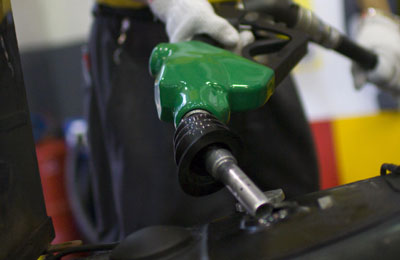
Saudi oil price target stretches to $110
London, January 12, 2013
By John Kemp
There has been no official announcement but Saudi Arabia's effective target for oil prices appears to have risen from $100 to $110 per barrel, based on recent changes in the kingdom's production levels.
In theory, the kingdom remains committed to an informal target of $100 for Brent first announced in a CNN interview given by Oil Minister Ali Naimi in January 2012. "Our wish and hope is that we can stabilise this oil price and keep it at a level around $100," Naimi said.
Speaking after a meeting of energy ministers in Riyadh in October, Naimi reiterated the $100 figure. "We would like to see the price moderating. Today Brent is $111, I think, or $112, we would like to see it lower, towards $100," he told reporters.
But Saudi production policy tells a different story. Output was cut to 9.025 million bpd in December, down from 9.49 million bpd in November and 9.72 million in October, and over 10 million bpd earlier in the year.
Production was cut back even though Brent averaged over $109 in November and December, and $111 in October, well above the theoretical target of $100.
The kingdom now appears content to live with prices around $110. It is focused on balancing the physical market to avert a bigger-than-usual build up of stocks in the first half of 2013 rather than attempting to push prices back towards $100.
Under pressure from consumer countries worried about a new slowdown just ahead of the US presidential election in November, Saudi Arabia ramped up production to more than 10 million barrels per day last summer in a bid to build stocks and prevent a further rise in prices.
Behind the scenes, the US and some other members of the International Energy Agency (IEA) reportedly agreed to release oil from the Strategic Petroleum Reserve (SPR) and other government-controlled stockpiles if Brent rose above $120. In the event, it peaked just below $118 and no stocks were released.
Now the presidential election is past and the US economy has skirted recession there is far less pressure on the kingdom to be seen to be pushing prices lower. Policymakers have therefore reverted to their normal posture of producing to demand.
FLOOD OF INVESTMENT
Prices at $110 are probably sustainable in the short term but not in the medium and long run.
The global economy has successfully adapted to cope with $110 oil. Prices are probably hampering recovery rather than pushing the US and the other advanced economies towards recession.
In any event, oil consumption is falling in both the US and the EU as countries take steps to enforce higher vehicle efficiency standards.
The main problem is that prices at $110 are far above the marginal cost of rival sources of production from shale, deepwater off the coasts of Africa and Latin America, new fields in the Arctic, or innovative energy pathways like gas to liquids (GTL).
High prices and strong corporate cashflows have unlocked a flood of exploration and production expenditure, which will bring on substantial amounts of new oil production in the next five years.
Oil production in the US is expected to rise by the largest amount on record in 2013 (900,000 barrels per day) and is set to surge by almost a quarter in the next two years, according to the latest projections from the U.S. Energy Information Administration.
The shale revolution is starting to go global, with strong interest in Argentina, Brazil and China and the glimmerings of interest even in Western Europe.
In conventional oil, Norway, Russia and the United States are all exploring in the Arctic Ocean, hitherto an environment that was considered too difficult and expensive.
And record amounts of exploration are occurring in the deep waters off the coasts of Africa and Latin America along the rift margins.
MARKET SHARE STRUGGLE
Unless prices fall enough to stave off some of those projects, soaring production outside the Middle East will cut deeply into Opec's and Saudi Arabia's market share between 2015 and 2020. Opec members will then face the same problem of apportioning diminishing market share they experienced in the 1980s.
For Saudi Arabia, the problem will be especially severe because the kingdom must also accommodate rising output from Iraq and the eventual reintegration of Iran into the world oil market.
In the long term, the kingdom needs lower prices to protect its market share and revenues. The longer the adjustment in prices is delayed, the more painful it will be when it finally comes. - Reuters







